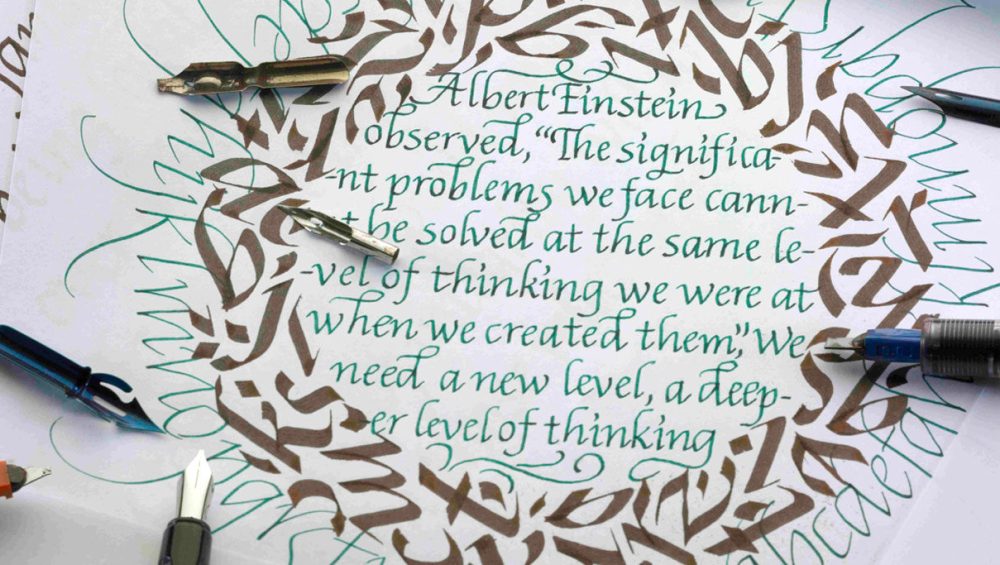Calligraphy, the art of beautiful writing, has captivated people for centuries with its elegance and expressive potential. From ornate wedding invitations to personalized artwork, calligraphy adds a touch of sophistication and style to various applications. In this blog post, we will introduce you to the basics of calligraphy, from choosing the right tools to practicing fundamental techniques, to help you master the art of beautiful writing.
- Choosing Your Calligraphy Tools:
To begin your calligraphy journey, you’ll need a few essential tools:
- Calligraphy pen: There are various types of calligraphy pens, including dip pens, fountain pens, and brush pens. As a beginner, you might find a fountain pen or brush pen with a flexible nib easier to work with than a dip pen.
- Ink: Choose a high-quality ink that flows smoothly and is compatible with your chosen pen. Fountain pen inks and calligraphy inks are available in a wide range of colors.
- Paper: Opt for smooth, high-quality paper that won’t cause your pen to catch or your ink to bleed. Calligraphy practice paper or marker paper works well for beginners.
- Learn the Basic Strokes:
Before diving into lettering, it’s essential to practice the basic strokes that make up calligraphy scripts. These strokes include upstrokes (thin lines created by applying light pressure while moving the pen upwards) and downstrokes (thick lines created by applying more pressure while moving the pen downwards). Other fundamental strokes include loops, curves, and slants. Practice these strokes individually to build muscle memory and gain control over your pen.
- Study Calligraphy Scripts:
Calligraphy encompasses a wide range of scripts and styles, each with its unique characteristics and history. Some popular scripts include Copperplate, Spencerian, Italic, and Gothic. Choose a script that appeals to you and study its letterforms, paying close attention to the stroke order and pen angles.
- Develop a Consistent Practice:
To improve your calligraphy skills, dedicate time to regular practice. Set aside 15-30 minutes per day, or a few times a week, to work on drills, letterforms, or small projects. Consistent practice will help you develop muscle memory, refine your technique, and gain confidence in your abilities.
- Experiment with Different Tools and Styles:
Once you’re comfortable with the basics, don’t be afraid to explore different calligraphy tools and styles. Experiment with various nib sizes, ink colors, and scripts to find your unique calligraphy voice.
- Learn from the Calligraphy Community:
Join calligraphy forums, follow calligraphers on social media, or attend workshops and classes to learn from others and stay inspired. The calligraphy community is a wealth of knowledge and support, and engaging with fellow enthusiasts can help you grow and refine your skills.
Mastering the art of beautiful writing through calligraphy is a rewarding and fulfilling pursuit. By equipping yourself with the right tools, practicing the basic strokes, and dedicating time to consistent practice, you’ll be well on your way to creating stunning calligraphy. Whether you’re looking to add a personal touch to your stationery, create unique artwork, or simply enjoy the meditative nature of the craft, calligraphy offers a world of creative possibilities.







